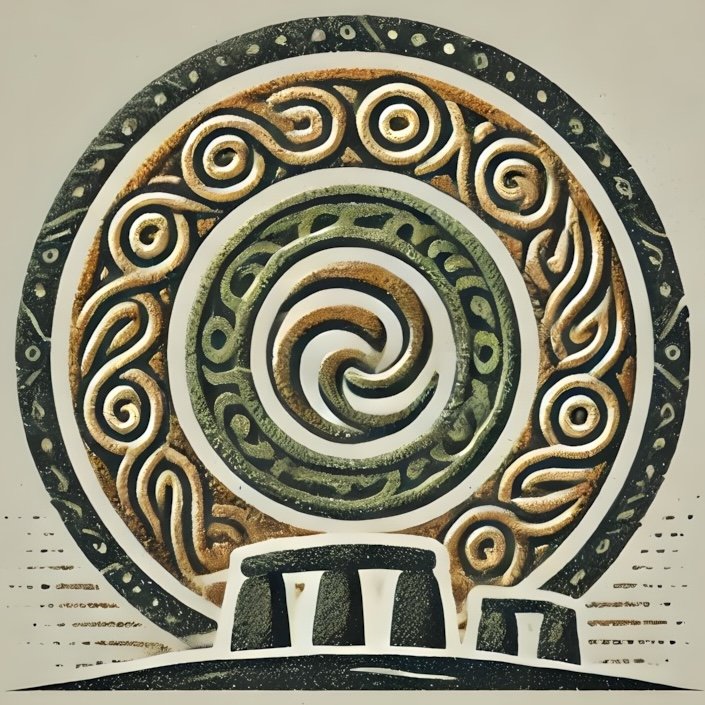Introduction to Language and Culture
Language is the lifeblood of culture, a vessel through which stories, beliefs, and traditions are passed down through generations. In the context of Irish prehistory, language serves as a critical lens through which we can understand the evolution of Celtic society. The interplay between language, art, and cultural shifts has profoundly shaped Ireland’s identity, reflecting a rich tapestry woven from the threads of ancient customs and modern influences. This chapter delves into the significance of language and culture in Celtic society, exploring how these elements interacted to create a unique cultural landscape that continues to resonate today.
Celtic Languages
The Celtic languages form a branch of the Indo-European language family, encompassing a diverse range of dialects and variations. In Ireland, the primary Celtic language is Irish (Gaeilge), a language with roots that trace back to the early medieval period. The evolution of the Irish language is emblematic of broader cultural shifts, encapsulating the historical experiences of the Irish people—from the arrival of the Celts around 500 BCE to the influence of the English language in the modern era.
The preservation of the Irish language is not merely a matter of linguistic heritage; it is a living expression of identity. The language is steeped in the myths and legends of the Celtic world, serving as a repository for the stories that define the Irish cultural landscape. As you traverse the lush landscapes of Ireland, the names of places—like the mystical Tír na nÓg or the ancient hill of Tara—echo the language’s deep connection to history and mythology.
Mythology and Language
Celtic mythology is a rich and intricate tapestry, interwoven with the very fabric of the Irish language. The myths and legends of ancient Ireland, such as the tales of the Tuatha Dé Danann and the epic saga of Cú Chulainn, are not only narratives but also linguistic artifacts that provide insight into the values and beliefs of the Celtic people. Language acts as a bridge between the past and present, allowing contemporary audiences to engage with the ancient stories that shaped their ancestors’ worldview.
The oral tradition played a vital role in the transmission of these myths, with bards and storytellers passing down tales through generations. This oral culture emphasized the importance of language as a communal experience, fostering a sense of identity and belonging among the Celtic tribes. Key sites in Ireland, such as the Hill of Uisneach—considered the spiritual center of Ireland—are steeped in these myths, inviting visitors to explore the landscapes that inspired legendary tales.
Artistic Expressions in Celtic Culture
Art in Celtic culture is a profound reflection of the society’s values, beliefs, and aesthetics. From intricate metalwork to stone carvings, the artistic expressions of the Celts are characterized by their elaborate designs and symbolic motifs. The famous La Tène style, which emerged around 500 BCE, is noted for its curvilinear patterns and stylized representations of animals and nature.
The Book of Kells, a masterpiece of illuminated manuscript art, exemplifies the fusion of language and visual expression in early medieval Ireland. This stunning work not only showcases the beauty of the Irish language through its ornate script but also serves as a testament to the spiritual and cultural significance of the written word. The vibrant illustrations within the Book of Kells bring to life the stories and beliefs of the Celtic world, inviting viewers to immerse themselves in a visual narrative that transcends time.
Celtic art is also deeply connected to the natural world, reflecting the Celts’ reverence for nature and their belief in the interconnectedness of all living things. Sites like Newgrange, with its intricate stone carvings and alignment with the winter solstice, illustrate how art and architecture were used to create spaces that resonate with spiritual significance.
Cultural Shifts and Influences
The Celtic transformation of Ireland was not a monolithic process; it was marked by a series of cultural shifts influenced by various factors, including trade, migration, and conquest. The arrival of Christianity in the 5th century CE brought significant changes to the cultural landscape, introducing new religious beliefs and practices that coexisted with and often adapted elements of pre-Christian traditions.
The synthesis of Celtic and Christian beliefs can be seen in the rich tapestry of Irish folklore, where pagan deities were often reinterpreted as saints, and ancient festivals were transformed into Christian celebrations. This cultural syncretism is evident in the celebration of Samhain, which evolved into Halloween, and the reverence for Brigid, a goddess who became associated with St. Brigid of Kildare.
Moreover, the influence of Viking and Norman invasions introduced new artistic styles and linguistic elements, further enriching the cultural milieu. These interactions fostered a dynamic exchange of ideas, resulting in a vibrant and evolving cultural identity that continues to shape contemporary Irish society.
Key Sites and Their Cultural Significance
Exploring Ireland’s landscape reveals a wealth of key sites that embody the cultural significance of the Celtic transformation. Each location offers a unique glimpse into the interplay of language, mythology, and artistic expression.
1. Tara: Once the seat of the High Kings of Ireland, the Hill of Tara is steeped in myth and history. It is said to be the place where the ancient kings were inaugurated, and its monuments, such as the Lia Fáil (Stone of Destiny), are rich in symbolic meaning. Visitors can explore the landscape while connecting with the legends that echo through time.
2. Newgrange: This prehistoric monument, older than Stonehenge and the Great Pyramids, serves as a testament to the astronomical knowledge and artistic capabilities of the Celts. The intricate carvings on its stones tell stories that have persisted through millennia, inviting visitors to contemplate the ancient beliefs that shaped this sacred site.
3. Grianan of Aileach: This ancient hillfort offers stunning views of the surrounding landscape and is steeped in mythology. It is believed to be associated with the legendary figure of the goddess Grian, and its strategic location reflects the importance of power and territory in Celtic society.
4. The Hill of Uisneach: Recognized as the spiritual heart of Ireland, Uisneach is a site of immense cultural significance. It is said to be the meeting point of the five provinces of Ireland and is associated with various myths, including the tale of the goddess Ériu. Visitors can explore the landscape while reflecting on its deep-rooted connections to Irish identity.
5. The Rock of Cashel: This iconic site, with its stunning medieval architecture, showcases the intersection of Celtic and Christian influences. The stories of St. Patrick and the conversion of the Irish people are woven into the fabric of this historic location, making it a vital stop for those interested in the cultural shifts that shaped Ireland.
Language, Art, and Cultural Shifts
As you journey through these key sites, you will not only witness the physical remnants of the Celtic transformation but also engage with the stories, language, and art that define Ireland’s rich cultural heritage. Each location serves as a portal to the past, inviting exploration and reflection on the enduring legacy of the Celtic world.

